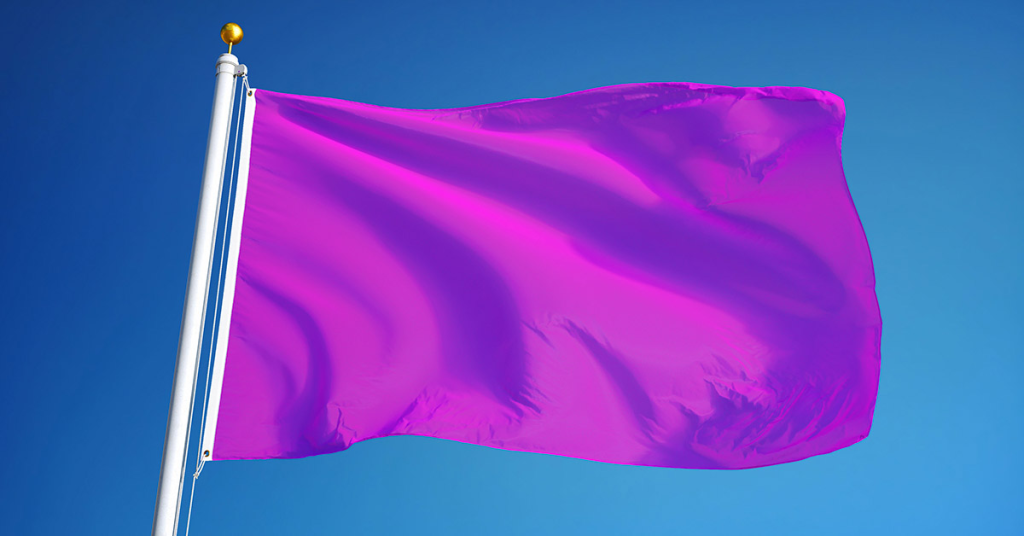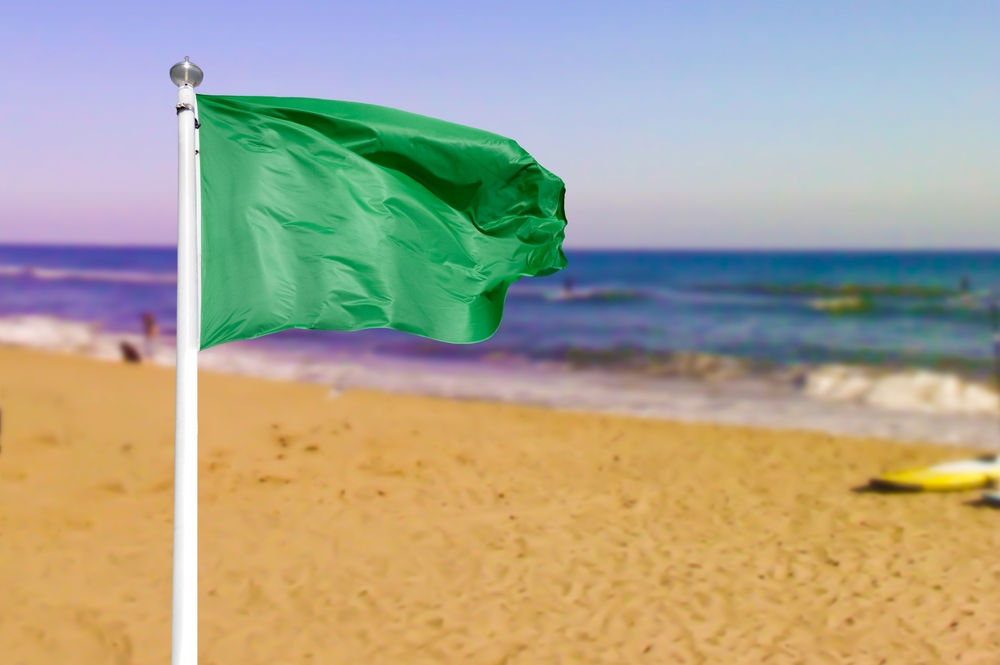There’s nothing quite like a sunny beach day—waves crashing, sunscreen in the air, and the peaceful rhythm of nature. But as dreamy as the ocean looks, it also hides some real dangers beneath the surface. That’s where beach flags come in—simple signals with potentially life-saving messages. And one of the most misunderstood of them all? The purple flag.
It might not grab your attention like a red flag does, but trust us—if you see a purple one flying, it’s time to pay close attention. Here’s everything you need to know about what it means, how to respond, and why ignoring it could seriously ruin your day.

What Does a Purple Flag Really Mean?
If you’ve ever seen a purple flag fluttering at your favorite beach, you might’ve wondered, “Is that… good or bad?” Spoiler alert: it’s not good.
A purple beach flag warns of dangerous marine life in the water. No, not sharks—that would usually warrant a different kind of alert or direct warning. The purple flag is all about less obvious, but equally risky, sea creatures like:
- Jellyfish
- Portuguese Man-O-War
- Stingrays
- Sea lice (microscopic jellyfish larvae)
These creatures don’t usually look scary. In fact, some are downright beautiful. But don’t let their appearance fool you—they can sting, injure, or even cause allergic reactions. In rare cases, they can be life-threatening.
Video: Beach Flag Warning System
Why the Purple Flag Matters More Than You Think
Let’s be real—most of us look for the big, bold flags: red for danger, green for go. But purple? That’s the sleeper signal. And ignoring it could mean stepping into water that’s swarming with jellyfish tentacles or stingrays resting in the sand.
Getting stung by a jellyfish might not be fatal, but it sure isn’t fun. We’re talking burning pain, swelling, welts, and in severe cases, vomiting, muscle cramps, and breathing issues. Same goes for stingrays. One wrong step, and their venomous barb could leave you limping out of the water.
The bottom line? That little purple flag is waving a message loud and clear: Stay alert, or better yet, stay out of the water.
Other Beach Flags You Should Know About

While the purple flag is crucial, it’s just one piece of the beach safety puzzle. Here’s a quick guide to the other flags you might see—and what they’re trying to tell you:
Green Flag = Safe to Swim
Calm waters, low hazard. This is your green light for fun. But still, stay aware of your surroundings.
Yellow Flag = Medium Hazard
Moderate surf and currents. Be cautious, especially if you’re not a strong swimmer.
Red Flag = High Hazard
Strong surf, strong currents. Swimming is highly discouraged and dangerous.
Double Red Flags = Beach Closed
No entry. The ocean is off-limits for your own safety.
Red and Yellow Flag = Lifeguard Zone
Swim here! These areas are monitored by lifeguards and are typically the safest spots.
Black and White Checkered Flag = Surfing Only
Designated for board sports. Swimmers should steer clear of these areas to avoid accidents.
Yellow Flag with Black Ball = No Surfboards or Watercrafts
Surfing or paddleboarding is prohibited here.
Orange Windsock = Offshore Winds Are Strong
Inflatable rafts and toys are unsafe—they can easily drift away from shore.
Don’t Assume You Know—Always Look for the Flags
If you’re a regular beachgoer, you might have some of these flags memorized. But if you’re on vacation or visiting a new beach? Always check the posted signs or talk to a lifeguard. Conditions can change by the hour, and flags can go up or down throughout the day.
What to Do If You See a Purple Flag
Video: FYI: Five Flag Warning System
Let’s say you arrive at the beach, and that purple flag is waving. What now?
- Ask a lifeguard what species are present—different creatures mean different risks.
- Avoid swimming unless you’re given the green light by professionals.
- Keep an eye on kids and pets—they’re more likely to wander too close to the water.
- Don’t touch marine animals that wash ashore. Even dead jellyfish can still sting.
If you do get stung, rinse the area with saltwater (not freshwater) and seek medical attention if symptoms worsen.
Why Purple Flag Awareness Saves Lives
We get it—nobody wants to drive all the way to the beach only to be told it’s not safe to swim. But ignoring a warning flag is like running a red light. The risk may not be immediate, but the consequences can be painful—or even deadly.
Understanding the purple flag warning gives you the chance to enjoy your day safely. You can still build sandcastles, sunbathe, or read your favorite book on the shore—just maybe skip the cannonball into the ocean that day.
Conclusion: Don’t Let a Flag Be the One Thing You Ignore at the Beach

Beach days should be all about relaxation, but that doesn’t mean letting your guard down completely. Flags like the purple one exist for a reason—and knowing what they mean can help protect you, your loved ones, and everyone else enjoying the coastline.
So next time you step onto the sand and feel the salty breeze on your face, do yourself a favor—look up at the flagpole. If you see purple? Respect it. The ocean will still be there tomorrow, and it’s always better to swim another day.


